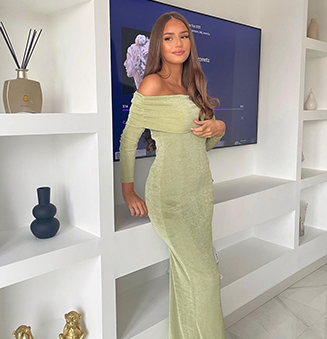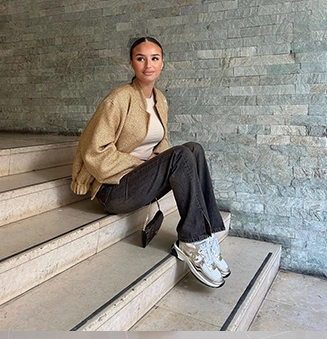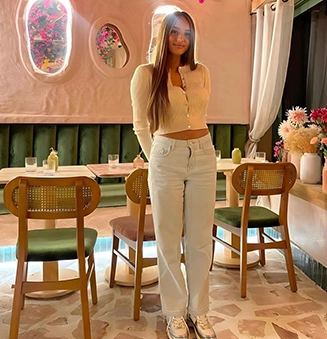
At a time when environmental awareness is at the forefront of our minds, the concept of sustainable living has evolved beyond mere trends into a way of life. As we strive to make eco-friendly choices in every aspect of our daily routine, our home is a natural place to start. Sustainable style in interior design goes beyond aesthetics; This involves selecting materials, products and practices that minimize environmental impact and contribute to a healthier planet. Dive into the world of eco-friendly living ideas with me and explore innovative ways to bring sustainability into every corner of our living spaces.
One of the cornerstones of sustainable interior design is the use of recycled and recycled furniture. Instead of contributing to the demand for new materials, consider incorporating pieces made from reclaimed wood, reclaimed metal, or repurposed materials. Not only does this reduce the need for new resources, but it also adds character and history to your home. Look for furniture made from old doors, pallets, or even industrial machinery, giving new life to materials that would otherwise end up in landfill.

When it comes to sustainable flooring, there are a variety of eco-friendly options. Consider materials like bamboo, cork, or reclaimed wood for a stylish and eco-conscious choice. Bamboo, in particular, is a rapidly renewable resource that grows quickly, making it an excellent alternative to traditional hardwood. Not only is cork biodegradable, but it is also naturally resistant to mold and mildew. This flooring choice not only contributes to a greener home, but also adds a touch of natural warmth and texture to your living space.
Incorporating energy-efficient lighting is a simple but effective way to improve the sustainability of your interior design. Opt for LED or CFL bulbs, which use less energy and have a longer lifespan than traditional incandescent bulbs. Consider installing smart lighting systems that allow you to control and optimize your lighting usage. Additionally, maximize natural light by strategically placing mirrors to reflect sunlight and choosing bright window curtains that let in enough natural light while providing privacy.
Textiles play an important role in interior design, from upholstered furniture to curtains and bedding. Choose fabrics made from organic and sustainably sourced materials such as organic cotton, linen or hemp. Not only do these materials have a lower environmental impact, but they are often free of harmful chemicals commonly used in conventional textile production. Discover the world of vintage and second-hand textiles, bring used fabrics back to life and reduce the demand for new productions.

Conventional paints often contain volatile organic compounds (VOCs), which release harmful gases into the air, contributing to indoor air pollution. Choosing low-VOC or no-VOC paints is a sustainable alternative that promotes healthier indoor air quality. Many eco-friendly paint options are now available, offering a wide range of colors and finishes without compromising on style. Look for paints made from natural ingredients like vegetable oils and extracts that contribute to a more sustainable and breathable living environment.
Conventional paints often contain volatile organic compounds (VOCs), which release harmful gases into the air, contributing to indoor air pollution. Choosing low-VOC or no-VOC paints is a sustainable alternative that promotes healthier indoor air quality. Many eco-friendly paint options are now available, offering a wide range of colors and finishes without compromising on style. Look for paints made from natural ingredients like vegetable oils and extracts that contribute to a more sustainable and breathable living environment.
Bringing nature into the home is a timeless and sustainable decorating choice. In addition to adding a touch of green to your space, houseplants also help improve air quality by absorbing pollutants. Consider incorporating different houseplants such as snake plants, pothos, or spider plants into different rooms. Plus, explore the world of sustainable planters made from recycled or upcycled materials to complete the eco-friendly look.
Wall coverings are a versatile way to add texture and personality to your home. Opt for eco-friendly options such as wallpaper made from recycled materials or FSC-certified wood paneling. Accent walls made from reclaimed wood are another sustainable and stylish choice and provide a focal point, that is both visually appealing and environmentally conscious. Discover non-toxic adhesives and finishes to complete the look and ensure your walls contribute to a healthier indoor environment.

Organization and storage are essential parts of interior design, and choosing sustainable storage solutions can have a positive impact on the environment and your living space. Consider furniture pieces with built-in storage, such as stools with hidden compartments or coffee tables with drawers. Explore baskets and containers made from natural materials like seagrass or bamboo – a stylish and eco-friendly way to keep your space tidy. Upcycled or reused storage solutions such as vintage crates or pallet racks add a touch of uniqueness to your decor while minimizing your environmental footprint.
Saving water is an essential aspect of sustainable living and incorporating water-saving fixtures into your interior design is a step in the right direction. Choose faucets, showerheads, and toilets that are designed to minimize water usage without compromising functionality. Look for faucets with WaterSense certification, which indicates they meet water efficiency and performance standards set by the Environmental Protection Agency (EPA). These choices not only help conserve water, but they also help reduce your utility bills over time.
Unleash your creativity and start with do-it-yourself (DIY) and upcycling decorating projects to add sustainability to your home. Use old furniture, create works of art from recycled materials or transform everyday objects into unique decorative pieces. Upcycling not only reduces waste, but also allows you to express your individual style through personalized and sustainable creations. Explore online platforms and communities for inspiration and tutorials and let your imagination guide you in creating unique pieces for your home.
Sustainable style in interior design is more than a trend; It is a commitment to create living spaces that align with our values and contribute to a healthier planet. From recycled furniture to energy-efficient lighting to eco-friendly textiles, every choice we make in our homes can have a positive impact on the environment. By adopting sustainable practices and incorporating eco-friendly ideas into our decor, we not only enhance the beauty of our living spaces, but also contribute to building a more sustainable and resilient future. Let your home reflect your commitment to the planet and let sustainable style become a defining feature of your living space.





